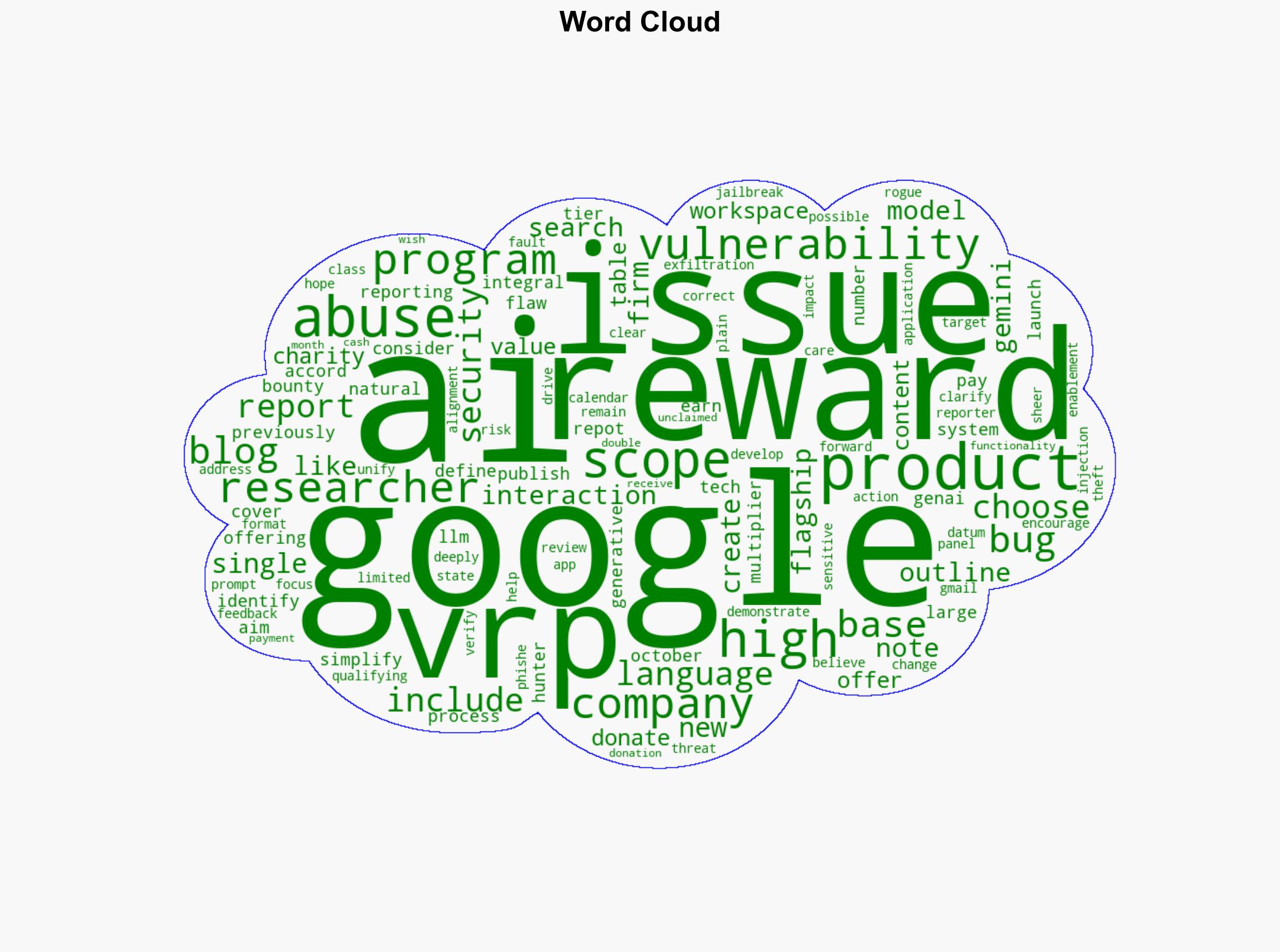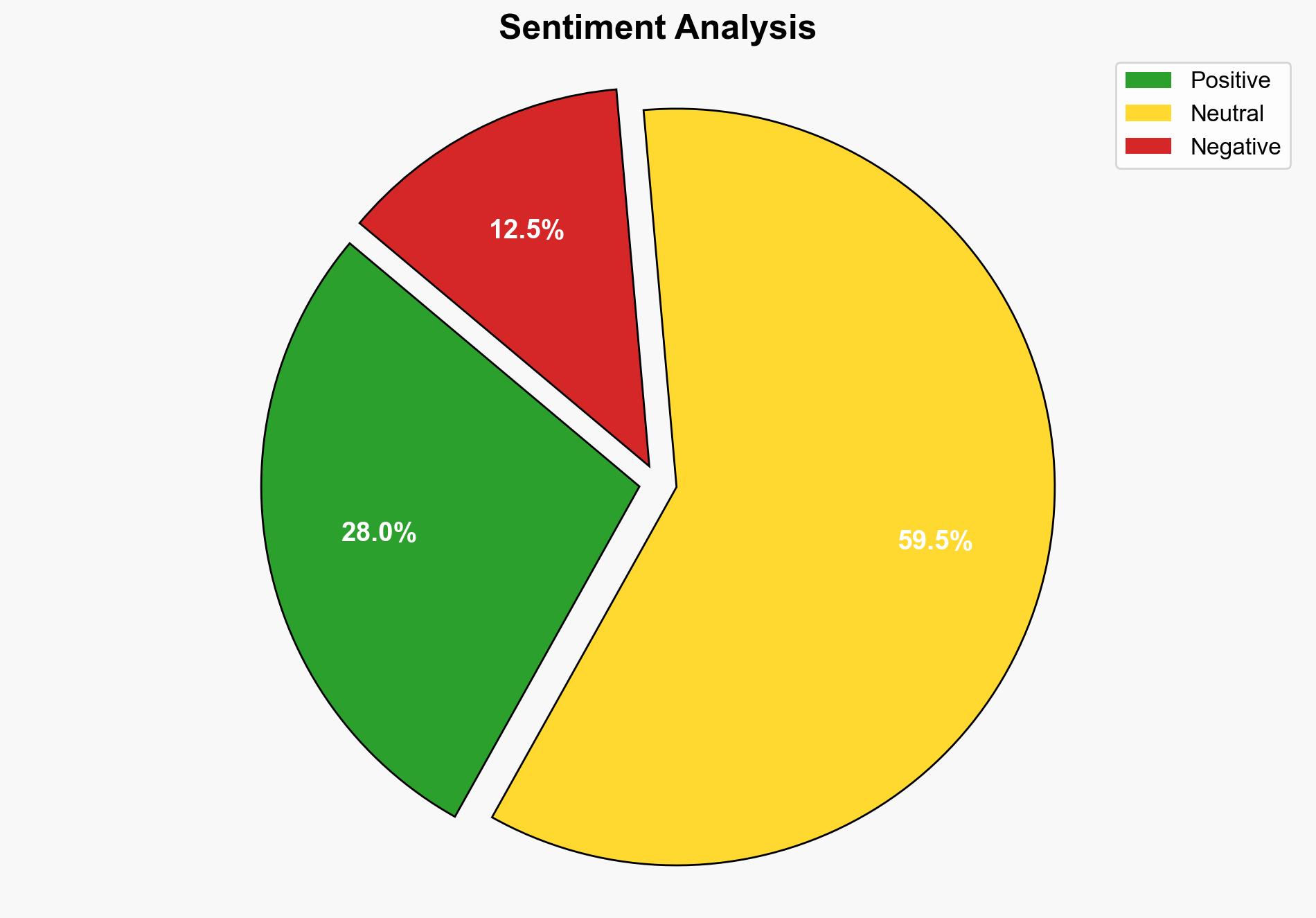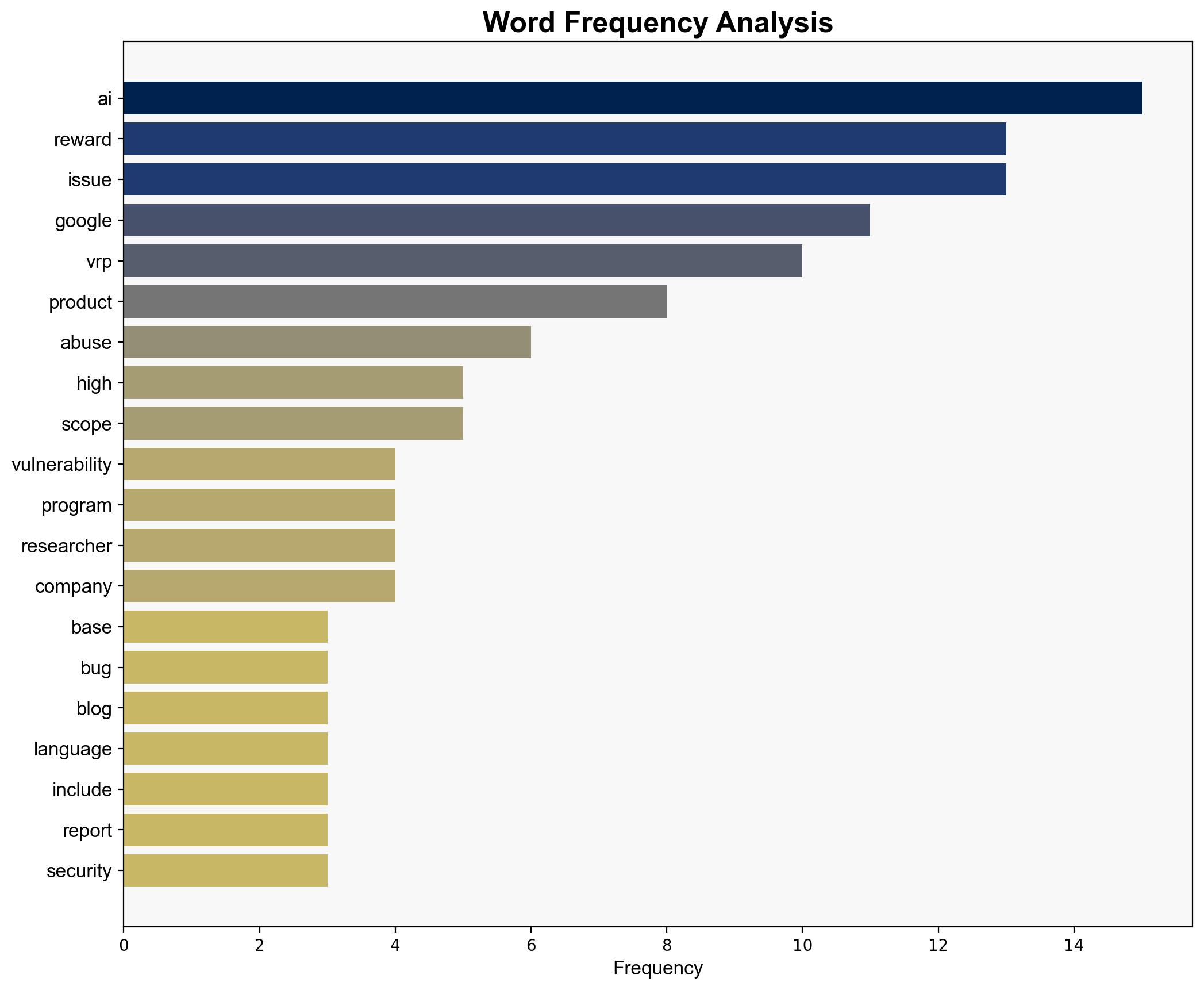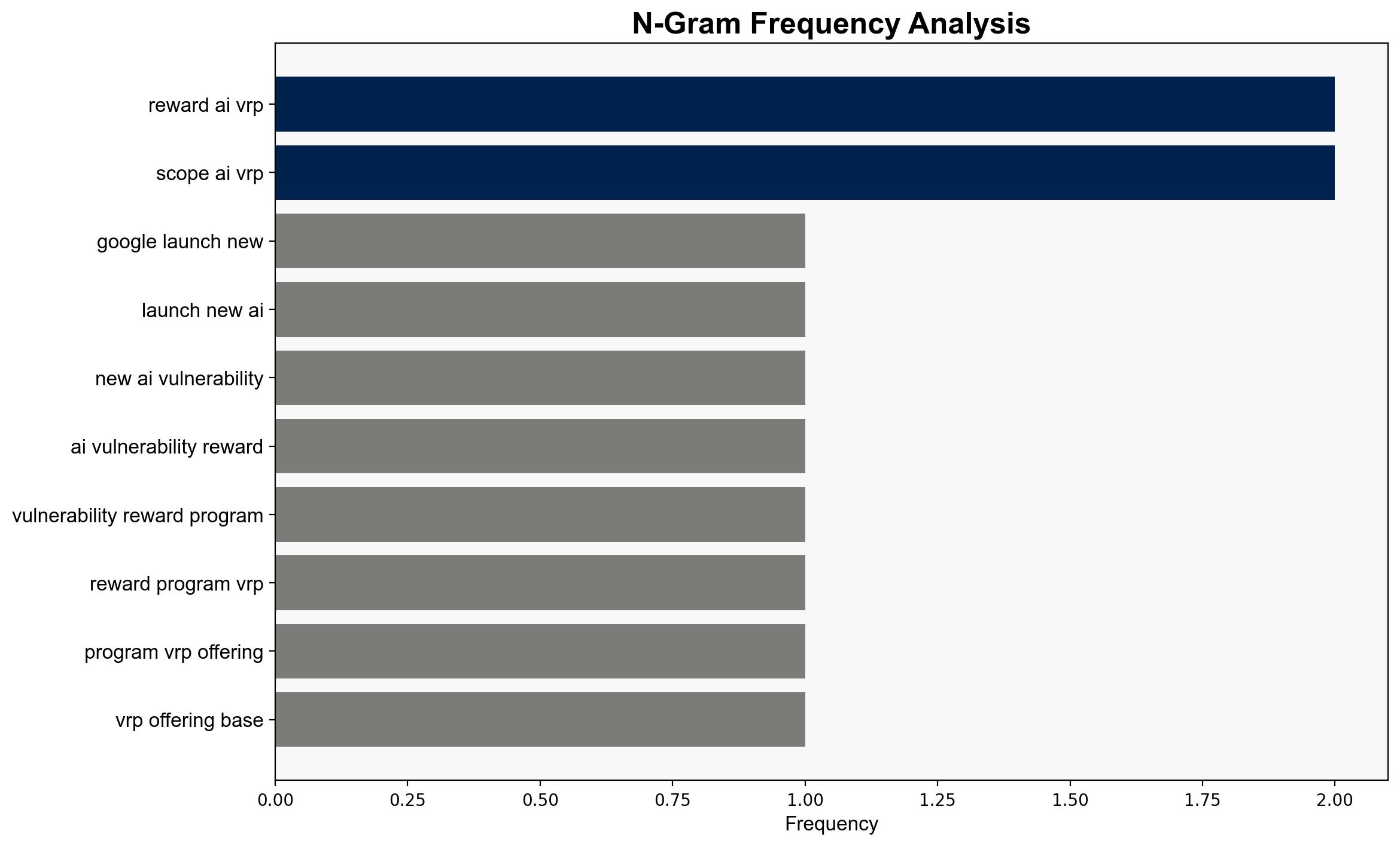Google Launches AI Bug Bounty with 30000 Top Reward – Infosecurity Magazine
Published on: 2025-10-10
Intelligence Report: Google Launches AI Bug Bounty with 30000 Top Reward – Infosecurity Magazine
1. BLUF (Bottom Line Up Front)
Google’s introduction of an AI Bug Bounty program with a top reward of $30,000 is a strategic move to enhance the security of its AI products. The most supported hypothesis suggests that Google aims to proactively address vulnerabilities in its AI systems by engaging external researchers. Confidence in this assessment is moderate due to the potential for alternative motivations. Recommended action includes monitoring the program’s impact on AI security and the broader tech industry.
2. Competing Hypotheses
Hypothesis 1: Google is launching the AI Bug Bounty program primarily to enhance the security of its AI products by leveraging external expertise. This aligns with the stated goal of simplifying the reporting process for researchers and addressing previously uncovered AI issues.
Hypothesis 2: The program is a strategic public relations initiative designed to improve Google’s image and demonstrate its commitment to AI safety, potentially deflecting criticism related to AI vulnerabilities and ethical concerns.
Using the Analysis of Competing Hypotheses (ACH) 2.0, Hypothesis 1 is better supported by the structured reward system and the focus on specific AI vulnerabilities. However, Hypothesis 2 cannot be entirely dismissed due to the potential reputational benefits.
3. Key Assumptions and Red Flags
– Assumption: Google genuinely prioritizes AI security over public relations benefits.
– Red Flag: The potential for the program to be more symbolic than substantive if not adequately funded or promoted.
– Blind Spot: The effectiveness of the program in actually reducing AI vulnerabilities remains untested.
4. Implications and Strategic Risks
The program could set a precedent for other tech companies, potentially leading to industry-wide improvements in AI security. However, if vulnerabilities are not adequately addressed, there is a risk of increased exploitation by malicious actors. Additionally, the program’s success or failure could influence public and regulatory perceptions of AI safety.
5. Recommendations and Outlook
- Monitor the program’s effectiveness in identifying and mitigating AI vulnerabilities.
- Encourage collaboration between tech firms to establish industry standards for AI security.
- Scenario Projections:
- Best Case: Significant reduction in AI vulnerabilities, leading to enhanced trust in AI technologies.
- Worst Case: Program fails to attract sufficient participation, leading to minimal impact on AI security.
- Most Likely: Moderate success with incremental improvements in AI security.
6. Key Individuals and Entities
– Google
– External researchers participating in the program
7. Thematic Tags
cybersecurity, AI safety, tech industry, public relations





